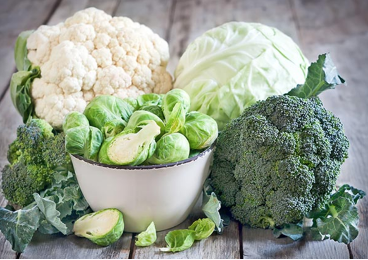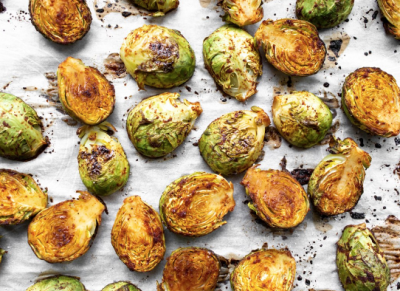Written by UConn Dietetics Student Josie Hare
Can you say cruciferous? Unusual, right? Funny enough, this word actually comes from the informal classification for members of the mustard family! It comes from the word cruciferae in Latin, meaning cross bearing. But we refer to cruciferous as a delicious group of vegetables that pack a great amount of nutritional punch!
Cruciferous vegetables include:
- Broccoli

- Cauliflower
- Cabbage
- Bok Choy
- Kale
- Arugula
- Brussels Sprouts
- Collards
- Watercress
- Radishes
Good News! Most of these vegetables are in season from fall to early spring, making them great for the winter time! They “cold store” very well in the refrigerator, too!
There is certainly a long list of nutritional benefits coming from this group of vegetables! Overall, cruciferous vegetables are high in fiber and low in calories, a great way to feel full without overeating! They are also very rich in many vitamins and minerals such as Folate and Vitamin K. Folate is necessary for proper growth and function of cells within the body, while Vitamin K is essential for bone health and wound healing. Cruciferous vegetables that are dark in color even pack additional nutrients such as Vitamins A and C, along with special plant-based components known as phytonutrients. These can help to lower inflammation and reduce risk of some cancers!
As a reminder, here are the amounts of veggies recommended to eat per day!
Adults= 2.5 Cups of vegetables per day
Children= 1-3 Cups of vegetables per day
But it is important to note: one cup of raw and cooked vegetables are equal to a 1-cup vegetable serving, while two cups of raw leafy vegetables make up a 1-cup serving.
While all veggies rock, and increasing any in your diet is a great thing, here are some ideas to get more of these nutrient-rich, cruciferous vegetables into your diet:
- Pureed cauliflower is a great substitute for cream sauce!
- Roast Brussels Sprouts in the oven for an easy snack or side dish!
- Use Kale as a salad or smoothie base!
- Add Arugula to pizza, salads, or even pesto!
Here’s a yummy Brussels Sprouts recipe to try!
Ingredients:
1 ½ lb. Brussels Sprouts
3 Tablespoons Olive Oil
¾ teaspoon Kosher Salt
½ teaspoon Ground Black Pepper
Directions:
- Preheat Oven to 400 degrees F.
- Wash your hands.
- Cut off brown ends of brussels sprouts and pull off any outer brown or damaged leaves.
- Mix the Sprouts in a bowl with the olive oil, salt, and pepper.
- Spread Brussels Sprouts onto a sheet pan and roast for 35 to 40 minutes, until crisp on the outside and tender on the inside.
- Enjoy!

Information obtained from EatRight.org & recipe from The Food Network.
This material is funded by USDA’s Supplemental Nutrition Assistance Program (SNAP).
This institution is an equal opportunity provider.